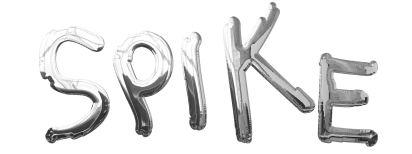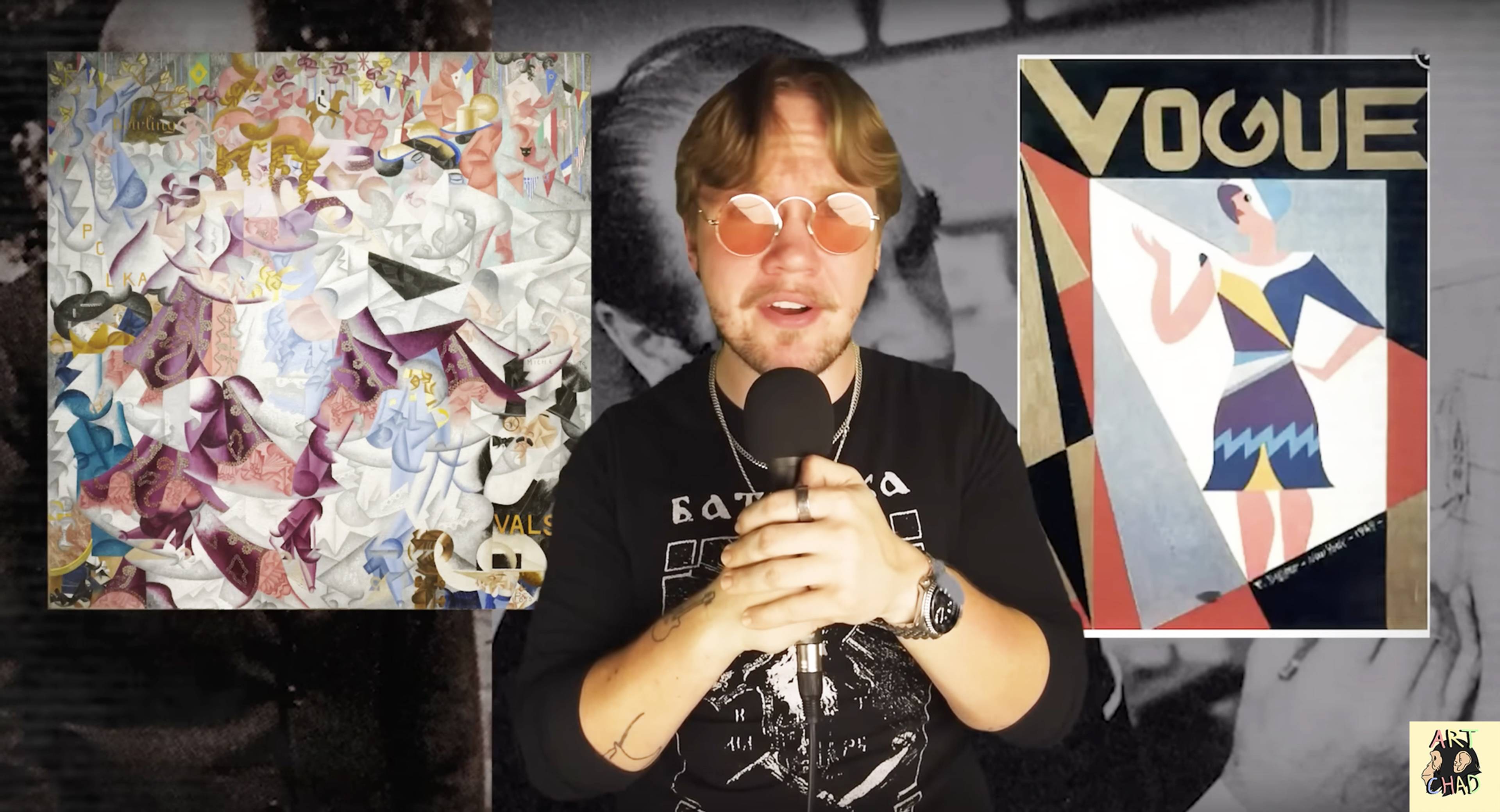The internet is in ruins, or maybe it was born that way. Alongside the die-offs of coral and other vulnerable species, the platforms through which we scroll away our lives appear to be dying, too. The People’s Cesspit once known as Twitter is now an intolerable Nazi-huckster hell called X. Snapchat has vanished like a single-view post. Spotify’s data extraction junta has sealed the palace of music behind a lake of burning shit. And Facebook? Let’s not even go there. Ever. Of the platforms that defined the rise of Web 2.0, the only one that seems to have anything left to offer is YouTube. And while much of the content there today is familiar, aeons long reaction/ary videos of clout farmers and neanderthal bro-casters, it’s also provided something of a home for contemporary art for more than a decade.
There is no clean beginning to that story – one may fondly remember 2010s artistic interventions by artists such as Petra Cortwright, Britta Thie, or Anne Hirsh – but the platform’s native art content reached a new maturity with Touching the Art (2014–15), a show by comedian and artist Casey Jane Ellison billed as “the only art talk show in earth’s entire history.” Featuring all-female panels (not least Bettina Korek, Juliana Huxtable, and Lauren Cornell) – and never, ever mentioning that fact – debating questions like “Is art evil?” and “Is the internet dead?” the show was, in many ways, ahead of its time, at a moment when the nature of what YouTube was remained up for grabs. Speaking to Ellison, we repeatedly returned to the question of how to refer to her show’s mode of dissemination. Was it a medium or a platform? Neither, exactly. “YouTube was a community that I wasn’t a part of, but I could use the space,” Ellison said. Simultaneously, Touching the Art belongs to a very particular moment in internet history. Though seemingly born for YouTube, with episodes usually running under ten minutes, it’s nonetheless clear that Touching the Art was, in an ur-sense, a “show,” more related to the kind of thing one would see on television than on today’s infinite livestreams. Ellison agrees: “TV was my main influence. I grew up watching TV as it existed then, and it’s bizarre that I’ve lived through the dismantling of it.” It is a prescient observation: TV died in order to become real life.
Another key figure in early art YouTube-ing was artist Jayson Musson’s character “Hennessy Youngman,” a talking head fit out in streetwear and hip-hop slang. Like Touching the Art, Musson’s program Art Thoughtz (2010–12) gestured to older televisual formats, with a structure self-conscious, scripted, and contained. But in hindsight, Musson’s longform-ish, straight-to-camera, solo reaction spiels were laying the groundwork for the sprawlingly essayistic content that defines the platform today, all while presaging the ways that the silting up of comments could create spin off communities in their own right. Youngman’s show was also quite forward-looking in its playful-painful awareness of the ways in which the art world would seek, even in a digital and dematerialized space, a pseudo-colonial sense of authenticity through Black culture and vernacular, while its freewheeling relatability and sharp-edged satire allowed a veneer of non-commerciality – one that persists despite YouTube’s increasingly relentless monetization.
If Youngman was the past’s most clear-eyed glimpse of the future, present-day YouTube is defined by a Möbius strip of content and content-about-content. As these discursive sediments solidified, the analysis of their layers became a genre in its own right, a kind of digital flood geology. Artist Brad Troemel’s one-foot-in-digital-, one-foot-in-material-life approach exemplifies contemporary “reaction video” culture. His jaundiced satirical eye and capacity to assimilate terabytes of information into “Reports” (e.g. “The Hipster Report,” “The Cancelled Report,” and, most frightening of all, “The Art School Report,” 2019–) have made him a highly influential figure for younger creators. Stuffed with images, graphs, and half-forgotten Sky Ferreira hits, these works lie in an unsteady interstitial space between artworks and more authorial, fact-based content; think philosopher Michel de Montaigne for the video-essay age. Along with videocasts like artist Joshua Citarella’s very aptly named Doomscroll, such essays encourage their viewers to “do their own research” in ways both salutary and risky – ultimately serving the content inflation on which YouTube thrives.
Into this nexus of knowledge, unknowing, and desire has emerged the ArtChad, neé Brogan Woodman, whose videos use art as a means of discursively pasting back together the shattered phone screen that is the present. Fluent in the sophisticated editing techniques and fricasseed meme humor that are the genre’s calling cards, his range of references and interests is as voracious as Troemel’s; recent titles include “You Completely Misunderstand Stoicism,” “Is Fetish art Important?,” and “The Goonification of Culture.” ArtChad’s output is very reflective of its moment, employing a longform approach and a brash polemicism that stand out amid the uber-churn of YouTube’s “For You” pages.
Unlike Ellison, Youngman, and Troemel, however, Woodman is less unambiguously left-coded, affiliating instead with the likes of conservative commentator and fellow Canadian YouTuber JJ McCullough (also a Doomscroll guest). Nevertheless, ArtChad is hardly MAGA, as a recent video about the value of Canadian nationalism demonstrated. He also shares an intellectual dissatisfaction with the “value-tainment” griftology that permeates self-proclaimed “based” Youtube content, noting in conversation that almost all of his political videos critique the right, rather than the omnipotent blue-haired baristas of reactionary myth.
The creep of a rightist aesthetics is on the minds of many art writers at the moment, and YouTube is a large part of this story. But what does this ostensible vibeshift really look like? As Gareth Watkins wrote recently in The New Socialist, today’s AI slop ecology has become emblematic of far right/fascist visual culture. Lamenting the passing of the greats of yore – ironically, traditionally a conservative hobbyhorse – Watkins writes: “There was a time when reactionaries were able to create great art – Dostoevsky, GK Chesterton, Knut Hamsun … writers like Céline and artists like Wyndham Lewis … not only produced great work, but developed and pushed forward the avant-garde styles of their days.” Today, where it’s not Shrimp Jesus, it’s all nauseating poverty-resilience porn. Behold a human head grafted onto a sewing machine and captioned “this man has lost everything except hope.” Well, that makes one of us.
Today, the web comes in the form of variously connected technologies from which no one can unhook.
I put the question to Woodman: Is there a rightwing avant-garde today? “I haven’t seen an academic art practice from the right yet, but memes and the lore of rightwing memes is incredibly in-depth, and the symbols they use, the wojak world and the soyjacks, and the dog whistles and specific symbols referenced in them … it’s like its own language.” Woodman connected this stance to the tradition of political cartooning, citing Honoré Daumier as a figure who moved from popular into fine art. Others who might be said to have trod that path include visual satirists of the ilk of James Gilray or William Hogarth, whose omnidirectional cynicism has led to a certain ambivalence about their status in today’s left-leaning art world. For Woodman and many others, to signify rightist cultural immersion is no longer to carry the novels of Yukio Mishima, ultranationalist coup attempter and Nobel Prize nominee; it’s to repost Chud memes.
Undoubtedly, algorithmized platforms and their algo-brained executives are turbo-charging our descent into the stupidest culture dreamable by human or machine, a process that is becoming lethal – and not only to its traditional victims in threatened minority communities. Recent tragicomedies include the on-stream suicide of the crypto coin grifter “MistaFuccYou,” whose last wish was to be made into a memecoin (reader, his wish came true), or the Solana developer who doused himself with isopropyl alcohol and had his boys shoot fireworks at him on stream to pump his memecoin. Such are the new Viking funerals. In this mediasphere, I couldn’t help finding ArtChad’s output heartening – if for no other reason than that he always concludes his videos with the plea to his viewers to “never kill yourself.” It’s not as easy as it sounds.
Perhaps most remarkable in speaking to Woodman was the sense he conveyed that creating YouTube art content is as much about the search for meaning as it is stacking that coin. I was struck by how often Woodman spoke in terms I remember from my days of looking up to Gen X musicians, e.g., describing the ocean of grift content as “soulless” and, most shockingly of all, confronting the perils of “selling out.” He also shares Ellison’s determination to connect with real people, though unlike the comedian, who has transitioned into producing stage drama, describing herself as “extremely IRL,” Woodman lives off income from his “subs.” In Woodman’s telling, then, YouTube’s capacity to aggregate huge audiences, if one is prepared to collude – at least to some degree – with the algorithm, means it’s not so much about completing, but simply trying, and perhaps failing at EM Forster’s famous dictum to “only connect.”
Still, the blood-dimmed content tide rolls on, and no one knows for sure where we’re going. But perhaps there’s a more general insight to be gleaned from the deep net-past about how we can understand ourselves within media. If the first wave of “show-y” YouTube treated the web as a place – a somewhere that you go to – the ability to “go live” when and wherever one chooses has made media ubiquitous; today, the web comes in the form of variously connected technologies from which no one can unhook. But even amid coerced connectivity to endless CCTV content streams and data-harvesting algorithms, the placeliness of the web hasn’t truly been lost; look no further than the infinite flow of chats on Twitch or Discord to see how, for many netizens, it remains a home away from home. Further to this media/IRL integration, the hoovering up of so much data exhaust and the congealment of our algorithmic autobiographies endow us with a presence in and a history with sites we’ve never even visited. We are always already in the web; meaning that when we log on to our content spigot of choice, we expect to find ourselves already there.
Is this good news or bad news? Well, one soyjack’s consolation is another wojak’s cope.
___
Casey Jane Ellison’s one-woman play, It’s My Sister, will run at the New Theater Hollywood, Los Angeles, later this year.


